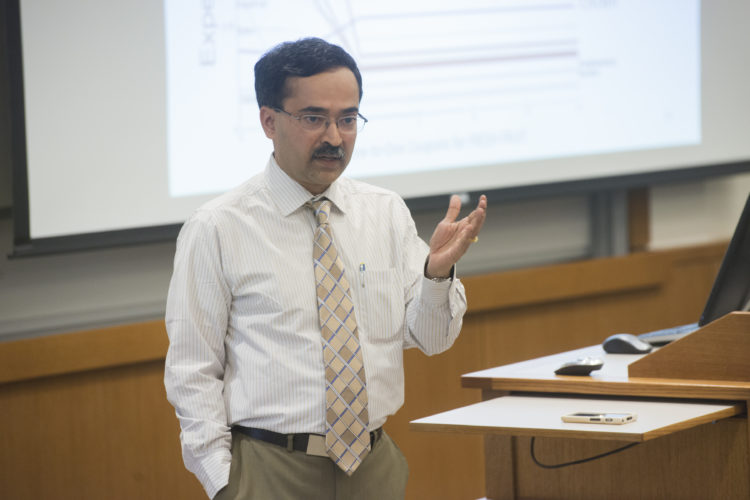Four years after it first launched with just 10 students, Olin’s specialized master’s program in business analytics is set for an upgrade—splitting into four separate tracks in the coming academic year.
The original master’s program, among the first in the country to focus specifically on customer analytics, has seen enrollment grow nearly fivefold since it was launched. “The program really took off like a rocket,” said Seethu Seetharaman, director of the master’s program and Olin’s Center for Customer Analytics and Big Data.
Until now, students have received a master of science in customer analytics. Beginning with the next academic year, the customer analytics program falls under the master of science in business analytics and will be joined by three other tracks: supply chain analytics, financial technology analytics, and healthcare analytics.
“We are unique in having this full house of differentiated programs,” Seetharaman said. He said Dean Mark Taylor encouraged the differentiated programs after seeing the growth in the original customer analytics program.
“There is widespread interest in analytics,” Taylor said.
The program capitalizes on a growing trend in marketing that combines technical programming skills with sound business savvy to wring insights from vast storehouses of data. Using data collected from product scanners, cash registers, smart devices, patient records, or wearable devices, skilled analysts can get ahead of business trends, forecast customer behavior, uncover solutions to business problems, or develop targeted marketing strategies.
In fact, the possibilities go well beyond those opportunities, which is, in part, what is driving the expansion into new specialities within data analytics. “It’s not just about ‘big’ data, but unconventional data,” Seetharaman said—vast stores of written text such as social media tweets could be a source of new insights.
Students in the newly renamed “business analytics” program will all take a set of core courses in their first semester. The array of electives and required courses will begin to vary depending which of the four tracks the students follow in the 18-month program.
Courses run from the very technical (algorithms and data structures) to the very business-oriented (pricing decision making and implementation).
The first students join the new four-track business analytics program in the fall.



